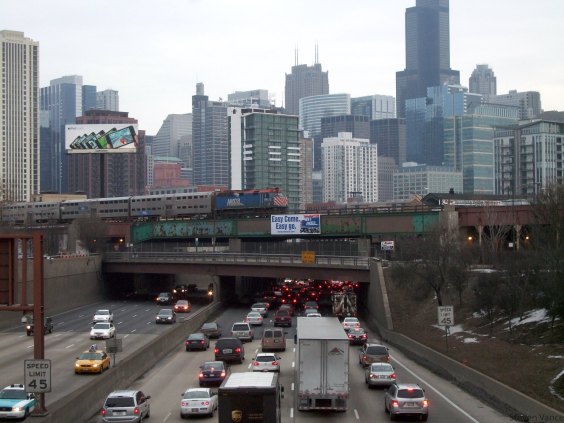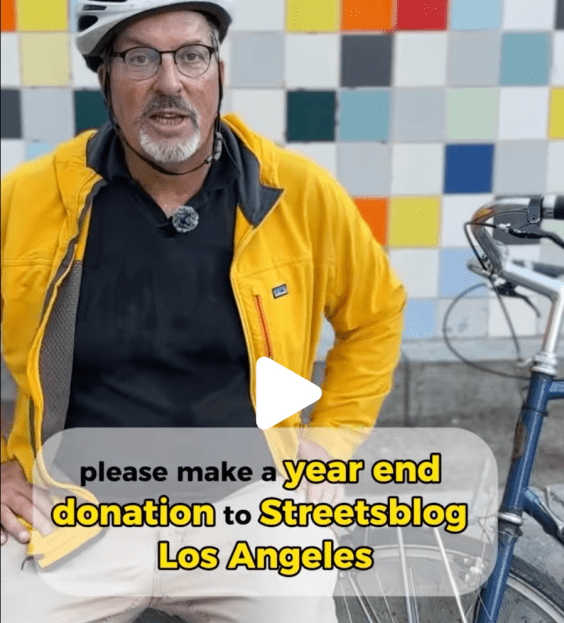The funding measures recommended by the Mayor's Transportation 2030 Task Force are a promising step toward building out the safe, reliable networks for transit, walking, and biking that San Franciscans need. Only a portion of the $10.1 billion needed for improvements identified by the task force would be funded by the measures, but if approved by voters on the November 2014 ballot, they could build traction to help city agencies obtain the rest.
"It is encouraging to see the city beginning to address the capital investments needed to keep our transportation system running," said Tom Radulovich, executive director of Livable City. "State and federal funding for transportation continue to decline, so regions and cities are increasingly on their own, and need to make smarter choices about what we fund and how."
A lack of dedicated funding is currently a major hurdle to building out the SFMTA's Pedestrian Strategy, the Bicycle Strategy, and the Muni Transit Effectiveness Project, not to mention filling a $3.1 billion backlog of Muni vehicle and infrastructure maintenance. The Mayor's Task Force proposals, which were developed in meetings over the past year, would be a start towards realizing those visions, as the SF Chronicle explained:
The Municipal Transportation Agency expects to receive $3.8 billion in revenue over the next 15 years to pay for transportation needs, but that leaves the city $6.3 billion short. To close the gap, city leaders should ask voters to take three actions that would raise almost $3 billion and help attract federal, state and regional funds to pay the rest, [said Monique Zmuda, deputy city controller and co-chair of the task force].
The task force will recommend that the Board of Supervisors put before the voters three ballot measures that would each raise roughly $1 billion:
-- Two $500 million general obligation bonds -- one in November 2014 and another in November 2024.
-- A measure to raise the vehicle license fee from 0.65 percent to 2 percent -- in November 2014. State law allows San Francisco voters to restore the fee, which was cut by Gov. Arnold Schwarzenegger.
-- A proposition that would increase the sales tax by half a cent -- in November 2016. That would raise the city sales tax from 8.75 percent to 9.25 percent.
"This kind of investment will show the kind of commitment the citizens of San Francisco have, and that will help get grants and other funding," Zmuda said.
In addition to state and federal grants, those funds could include money from the state cap-and-trade program, bridge toll revenue, transit impact fees and money from development agreements, she said.
"It's great to see the mayor and supervisors articulate the incredibly important role that excellent transportation -- including biking -- plays in making our city a great place to live, for everyone," said Kit Hodge, deputy director of the SF Bicycle Coalition.
Tomorrow, a Board of Supervisors committee will hold a hearing called by Supervisor Eric Mar on how to fund the SFMTA's Bicycle Strategy, which lays out two primary scenarios for installing a network of safer streets to make bicycling accessible to more San Franciscans. The "Strategic Plan" scenario, which the SFMTA estimates would increase bicycling to an estimated 8 to 9 percent of all trips, would require $200 million over six years. The "System Build-Out" scenario, which is projected to meet the city’s goal of 20 percent of trips by bike by 2020, would cost $600 million.
In total, the task force ballot measures would provide $316 million to split between the Bicycle and Pedestrian Strategies from 2015 to 2030.
"While the Task Force recommendations do not fully fund the 'System Build-Out' scenario, even over this much longer timeframe," Hodge said, "the recommended bike funding levels are a huge step forward from the rounding error -- 0.46 percent of the MTA Capital Budget -- that the city has historically invested in biking."
Walk SF Executive Director Nicole Schneider applauded the task force's efforts to set the city on a course to fund the Pedestrian Strategy, which calls for a 50 percent reduction in pedestrian injuries by 2020. While Mayor Ed Lee has said increasing funding for the Bicycle Strategy is not a priority, he promised at Walk to Work Day not to let the Pedestrian Strategy "sit on the shelf." Of the estimated $363 million called for in the plan to implement safety upgrades on priority streets by 2021, the city has a $215 million shortfall, which the Mayor's Task Force measures could help fill.
"If approved by the voters, the Transportation Task Force recommendations will generate much needed funds to protect pedestrian safety by putting the Pedestrian Strategy into action," said Scheider, pointing out that it would help move redesigns forward on streets like Sixth Street and "literally every street in the Tenderloin."
"By funding the Pedestrian Strategy, we can work with the city to reclaim these streets for everyone and prioritize safety over speed."
SPUR Executive Director Gabriel Metcalf, the chair of the Mayor's Task Force, told the Chronicle that getting the funding measures approved is a crucial step toward averting a more car-clogged future for San Francisco, and that he's confident voters will pass them.
The proposed GO bonds appear to be the most promising means to finance the implementation of the Muni TEP within the next few years. The TEP calls for a major expansion of transit-only lanes and other upgrades to make many routes faster and more reliable. The TEP is expected to not only improve commutes and attract more riders, but to also cut down on Muni's operating costs.
"We're making an old-fashioned plea to the people of San Francisco to think about the good of the city as a whole and to make an investment that will make the city work better," Metcalf told the Chronicle. "Whether you get to work in a bus or car, a bike or train, you have an interest in a well-funded transit system. Muni carries 700,000 trips a day today. If we do not reinvest in the system, more and more of those 700,000 daily riders are going to abandon transit, begin driving cars and choke the city in congestion."
Here's the Chronicle's breakdown of how the task force recommends investing the new transportation revenue:
The task force's investment plan recommends spending most of the new revenues - about 54 percent - on maintaining and repaving streets, rehabilitating and maintaining the Muni fleet, replacing rails and overhead wires, paying the city's share to operate Caltrain, replacing escalators and elevators in combined Muni-BART stations and developing safety improvements for bike riders and pedestrians.
About 32 percent would go toward enhancing the existing system, with improvements to Muni maintenance facilities, some of which date to the 1920s and can't even fit existing buses. The money would also go to efforts to speed up Muni buses, including a bus rapid transit arrangement on Geary Boulevard, adding canopies at shared Muni and BART stations, and paying to transform Market Street to boost transit travel speeds and make it safer for bicyclists and pedestrians.
The final 14 percent would go toward expanding and improving the bicycle network, planning a Caltrain downtown extension, enlarging the Muni fleet and making neighborhoods more accommodating to pedestrians.
As for filling the remaining funding gap of over $3 billion, Radulovich said it's "an open question," but suggested these ideas:
We ought to ask development to pay more of its infrastructure costs. We need to figure out how to accommodate job and housing growth with sustainable transportation modes, with less congestion, less demand for road space and parking, and less wear-and-tear on streets than conventional development. We need to explore more "infrastructure efficient" development - concentrating job growth around existing and planned regional transit hubs, minimizing expensive road and parking construction in new development areas, and encouraging housing where transit and street infrastructure already exist (like West Portal Avenue, which has three streetcar lines, but is only zoned for two-story buildings).
The full 2030 Transportation Task Force report is available on the Planning Department's website.






